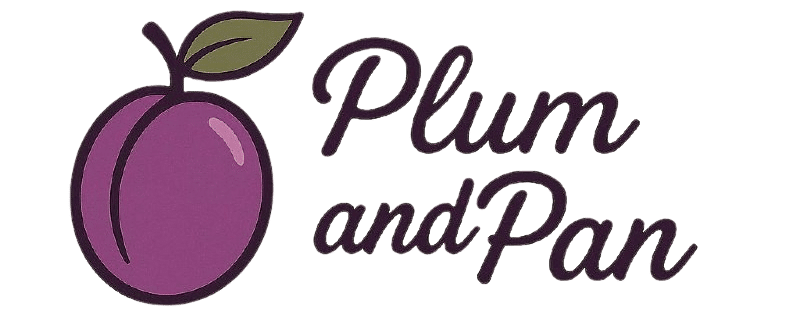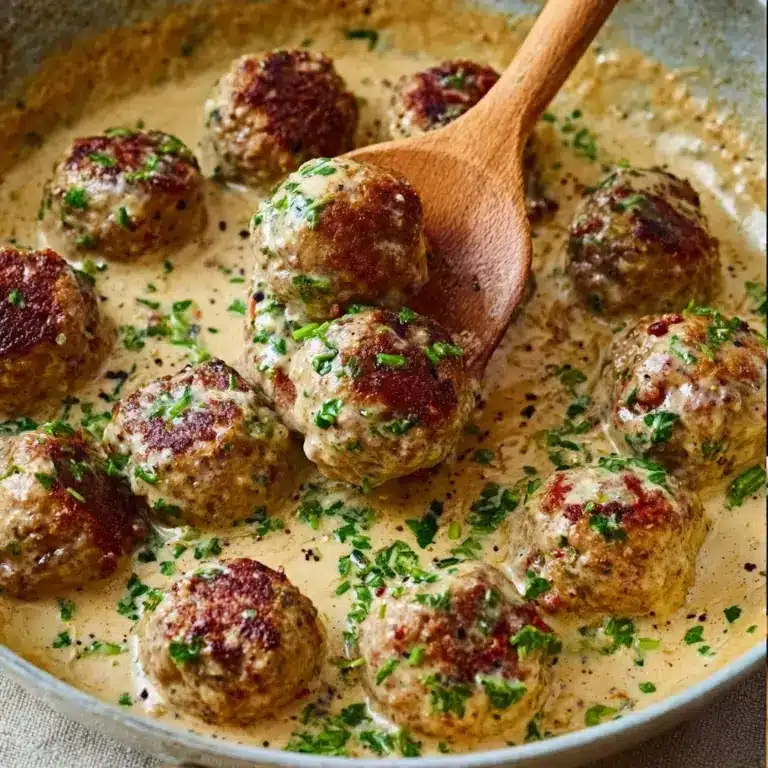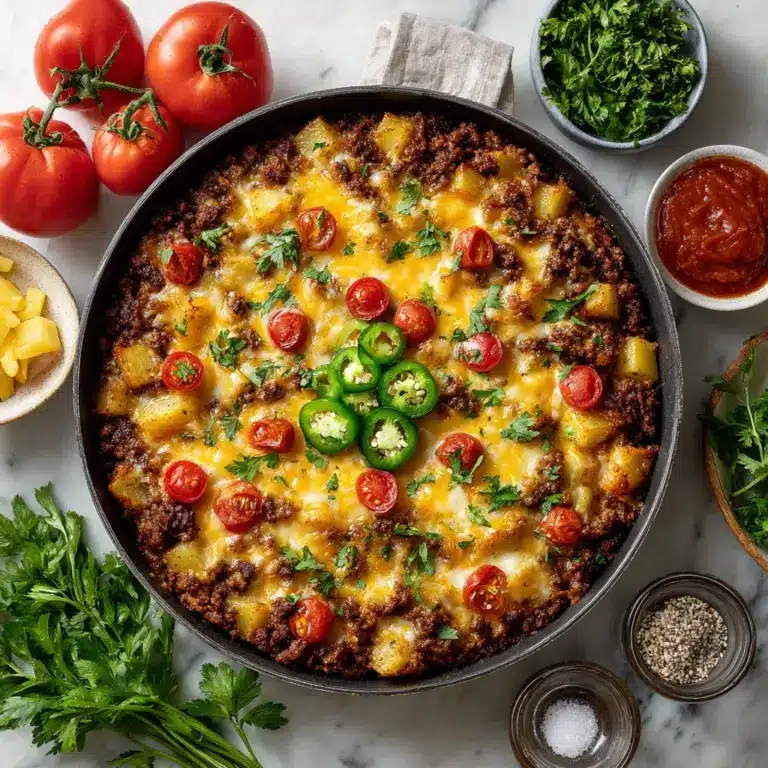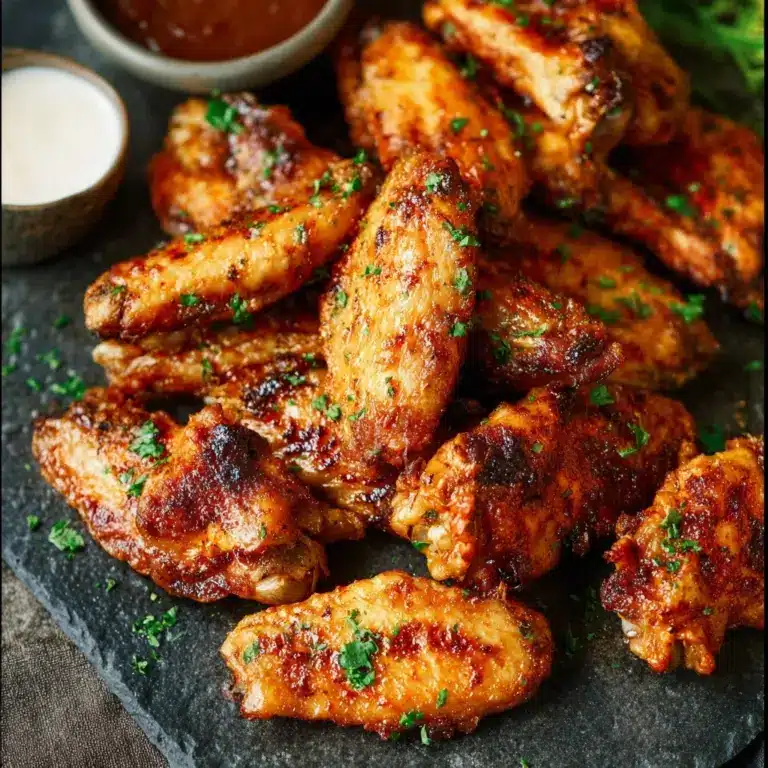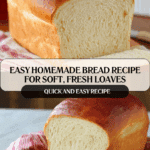Easy Homemade Bread Recipe
There is something truly magical about baking your own bread at home, and this Easy Homemade Bread Recipe captures all the warmth and satisfaction of fresh-from-the-oven goodness without any fuss. With just a handful of simple ingredients and straightforward steps, you’ll create a loaf that’s perfectly soft on the inside with a lightly crisp crust on the outside. Whether you’re a beginner or seasoned bread baker, this recipe offers a delicious way to fill your kitchen with the comforting aroma of homemade bread that everyone will love.
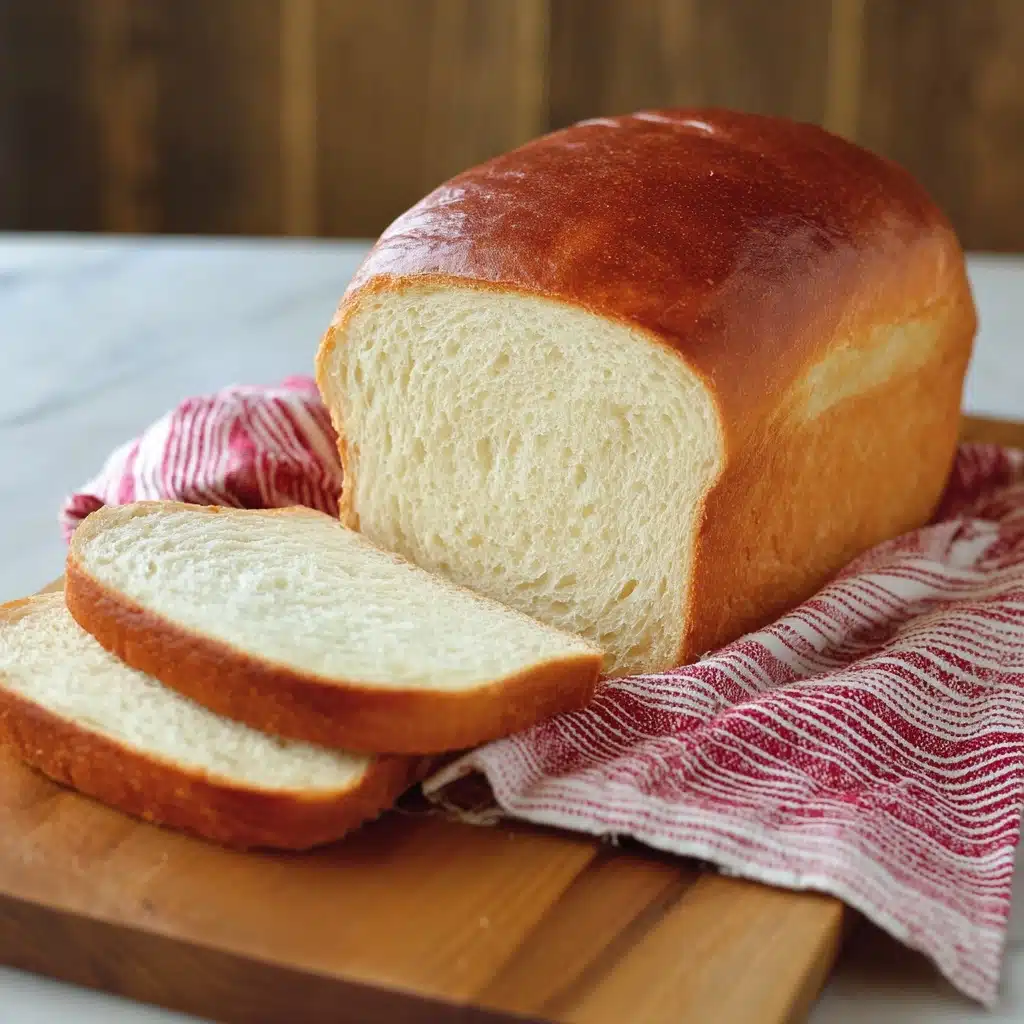
Ingredients You’ll Need
Getting the ingredients right is key, but don’t worry—this recipe keeps things refreshingly simple. Each component plays an important role in creating that tender crumb and golden crust that make homemade bread so irresistible.
- Warm water (110-115 degrees F): Activates the yeast gently, providing the perfect environment for it to wake up and work its magic.
- Dry yeast (2 1/4 teaspoons): The heartbeat of your bread, responsible for the rise and airy texture.
- Sugar (2 tablespoons): Feeds the yeast and adds just a subtle hint of sweetness that balances the flavor.
- Oil (2 tablespoons): Keeps the bread moist and tender, while adding a lovely richness—olive or avocado oil works beautifully.
- Flour (3 to 3 1/4 cups): The foundation of your loaf; bread flour makes for a chewier texture, while unbleached all-purpose flour yields a soft bite.
- Salt (1 teaspoon): Enhances all the flavors in the bread and controls the yeast’s activity to prevent over-rising.
- Butter (optional): For brushing the top, this adds a glossy finish and a tender crust that’s simply irresistible.
How to Make Easy Homemade Bread Recipe
Step 1: Activate the Yeast
Begin by warming your water to a comfortably warm temperature, roughly like bath water. This is key to gently waking up your yeast without shocking it. Sprinkle the dry yeast and half the sugar into the water, stirring just until dissolved. In just a few minutes, you’ll see the yeast foam up—the exciting sign that your bread is off to a great start!
Step 2: Combine the Wet Ingredients
Into your stand mixer’s bowl, pour all the liquids including the activated yeast mixture and the oil. Mixing these early ensures that every part of your dough benefits from the moisture and fat content, yielding that tender crumb we all love.
Step 3: Add the Flour and Salt
Add half of your flour to the wet ingredients and start mixing on a low speed with a dough hook. Once the dough starts to come together, gradually add the remaining flour and your salt. Then crank up the speed a bit and let the mixer knead for 5 to 10 minutes, developing the gluten strands that give bread its wonderful structure.
Step 4: First Rise
Lightly brush your mixing bowl with oil and coat the dough in it, preventing drying out while it rises. Cover the bowl with plastic wrap and let your dough rest in a warm spot until it roughly doubles in size. This can take anywhere from 30 minutes to an hour and a half, so keep your patience ready!
Step 5: Shape the Loaf
After the first rise, punch down the dough gently and turn it onto your countertop. Shape it into a rectangle that matches your bread pan’s width—around 9 by 5 inches. Roll it up tight from the short edge and place it seam side down into a greased loaf pan. This step is where you start to see your bread take form.
Step 6: Second Rise
Cover loosely with plastic wrap or a clean towel and allow the dough to rise again until doubled, about 30 to 60 minutes. This second proofing ensures a soft, airy interior and a loaf that bakes up with a fantastic volume.
Step 7: Bake Your Bread
Preheat your oven to 375 degrees. Once your dough has completed its second rise, pop it into the oven and bake for 23 to 27 minutes. The aroma will be heavenly as the crust browns to a perfect golden hue.
Step 8: Cool and Finish
Within five minutes of removing your bread from the pan, transfer it to a cooling rack. Brushing the top with melted butter while it’s warm gives your loaf a shiny crust and a soft, inviting bite right from the crust to the core.
How to Serve Easy Homemade Bread Recipe
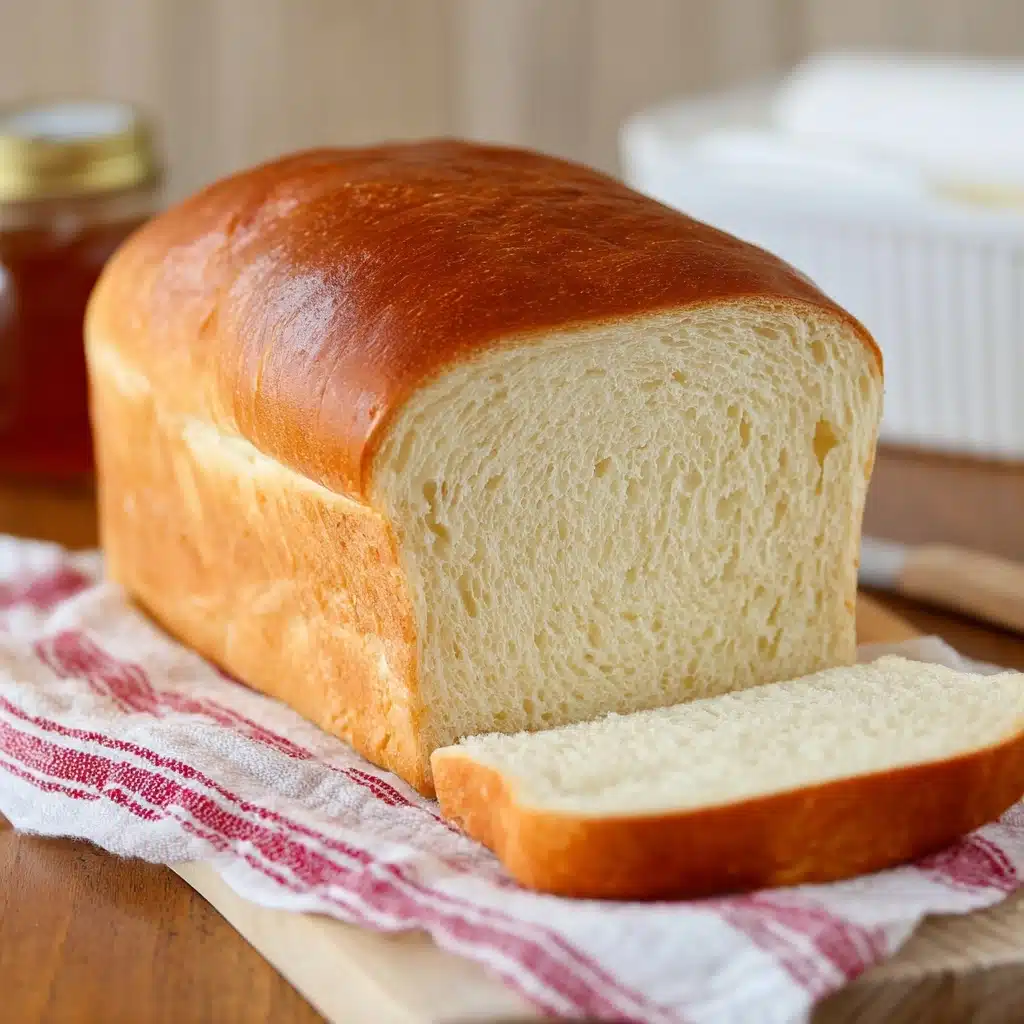
Garnishes
Although the bread is delightful on its own, a light spread of butter or your favorite homemade jam can elevate the experience. A sprinkle of sea salt or herbs on top before baking can also add a flavorful twist.
Side Dishes
This bread pairs magnificently with soups like tomato basil or creamy potato leek, making every bite cozy and comforting. It’s also fantastic alongside a fresh salad or with rich stews to soak up every last bit of delicious sauce.
Creative Ways to Present
Try slicing your loaf thick for robust sandwiches or torn apart for a rustic bread basket at your next dinner. You can even toast slices for breakfast topped with avocado or soft cheese for a quick and tasty treat.
Make Ahead and Storage
Storing Leftovers
Wrap your leftover bread tightly in plastic or place it in a bread bag at room temperature to keep it fresh for 3 to 4 days. For longer enjoyment, the fridge can extend freshness to about a week, but be mindful it can dry out faster there.
Freezing
This Easy Homemade Bread Recipe freezes wonderfully. Slice beforehand and store in an airtight bag for up to 3 months. When you want some, you can take out just the slices you need, making breakfast or snacks super convenient.
Reheating
To revive frozen or day-old bread, simply toast slices or wrap the whole loaf in foil and warm it in a 325-degree oven for about 10 minutes. A quick butter brush before warming can restore that delightful softness and fresh-baked aroma.
FAQs
Can I use whole wheat flour instead of all-purpose?
Absolutely! You can substitute some or all of the flour with whole wheat, but keep in mind the loaf might be denser and require a bit more water. Experimenting with a mix of whole wheat and all-purpose can give you a nice texture and flavor balance.
Is it necessary to use a stand mixer?
While a stand mixer makes kneading easier, you can knead the dough by hand on a lightly floured surface for about 10 to 15 minutes until smooth and elastic. It’s a great way to connect more deeply with the process.
How do I know if the bread is fully baked?
Look for a golden brown crust and a hollow sound when you tap the bottom of the loaf. If you have a thermometer, the internal temperature should be around 190 to 200 degrees Fahrenheit when fully baked.
Can I add herbs or seeds to the dough?
Definitely! Adding herbs like rosemary or thyme, or seeds such as poppy or sesame, can add fantastic flavor and texture. Mix them in with the flour before kneading to distribute evenly.
What’s the best way to make the crust extra crispy?
For a crustier loaf, place an oven-safe dish with water on the bottom rack during baking to create steam. This moisture helps develop a lovely crunch on the crust while keeping the inside soft.
Final Thoughts
There’s truly nothing like the satisfaction of creating your own bread from scratch, and this Easy Homemade Bread Recipe is the perfect starting point to build your confidence and delight your family and friends. With just a little time and simple ingredients, you’ll enjoy fresh, fragrant bread that fills your home with warmth. So why not give it a try today? Your taste buds and your kitchen will thank you!
Print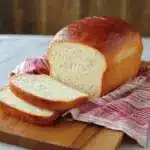
Easy Homemade Bread Recipe
- Total Time: 1 hour 20 minutes to 2 hours 10 minutes (including rising times)
- Yield: 1 loaf (about 12 slices) 1x
- Diet: Vegetarian
Description
This easy homemade bread recipe is perfect for anyone looking to bake a soft, fluffy loaf of bread at home with simple ingredients and straightforward steps. Using basic pantry staples such as yeast, flour, and oil, this bread achieves a golden crust and tender crumb, ideal for sandwiches, toast, or simply enjoyed with butter.
Ingredients
Liquid Ingredients
- 1 cup warm water (110–115 degrees F)
- 2 1/4 teaspoons dry yeast
- 2 tablespoons sugar (or honey)
- 2 tablespoons oil (olive oil, avocado oil, or any neutral oil)
Dry Ingredients
- 3 to 3 1/4 cups flour (bread flour or unbleached all-purpose flour)
- 1 teaspoon salt
Optional
- Butter (for brushing on top of bread)
Instructions
- Activate the yeast: Warm the water until it reaches a comfortable bath temperature (110-115°F). Sprinkle the dry yeast and half the sugar into the water and stir until dissolved. Allow the mixture to sit for a few minutes until it becomes foamy, indicating the yeast is active.
- Combine liquids: Pour the yeast mixture along with the remaining sugar and oil into the bowl of a stand mixer.
- Add flour and start mixing: Add half of the flour to the liquid ingredients. Using a dough hook attachment, mix on low speed just until the dough begins to come together. Then add the remaining flour and salt gradually, increasing the speed slightly as you knead.
- Knead the dough: Continue kneading the dough with the dough hook for 5 to 10 minutes until smooth and elastic.
- First rise: Lightly oil the mixing bowl and coat the dough with a little oil to prevent drying. Cover with plastic wrap and let the dough rise in a warm place until it doubles in size, usually between 30 to 90 minutes.
- Preheat oven: Preheat your oven to 375°F (190°C) while the dough is rising.
- Shape the loaf: Once the dough has doubled, transfer it to a floured surface and gently shape it into a rectangle approximately the width of your bread pan (typically 9×5 inches).
- Roll and place in pan: Roll the dough tightly starting from the short side to form the loaf shape. Place the roll seam side down into a greased loaf pan.
- Second rise: Cover the loaf loosely with plastic wrap or a towel and let it rise again until doubled, about 30 minutes to 1 hour.
- Bake: Bake the bread in the preheated oven for 23 to 27 minutes until the crust is golden brown and the bread sounds hollow when tapped.
- Cool and finish: Remove the bread from the pan within 5 minutes to prevent sogginess and place it on a wire rack to cool. Brush the top with butter for a glossy, softer crust.
Notes
- Ensure the water is not too hot or it may kill the yeast; it should feel warm to the touch.
- You can substitute sugar with honey for a slightly different flavor and texture.
- Use bread flour for a chewier crumb or all-purpose flour for a softer loaf.
- Storing bread at room temperature for 3-4 days is best; refrigeration extends the shelf life but may dry the bread faster.
- Freezing the bread is a great option for long-term storage, up to 3 months.
- For an even softer crust, brush the bread with melted butter immediately after baking.
- Prep Time: 15 minutes
- Cook Time: 25 minutes
- Category: Bread
- Method: Baking
- Cuisine: American
Nutrition
- Serving Size: 1 slice (approx. 50g)
- Calories: 140
- Sugar: 2g
- Sodium: 180mg
- Fat: 3.5g
- Saturated Fat: 0.5g
- Unsaturated Fat: 3g
- Trans Fat: 0g
- Carbohydrates: 24g
- Fiber: 1g
- Protein: 4g
- Cholesterol: 0mg
Keywords: homemade bread, easy bread recipe, simple bread, yeast bread, soft bread, bread loaf, baking bread
